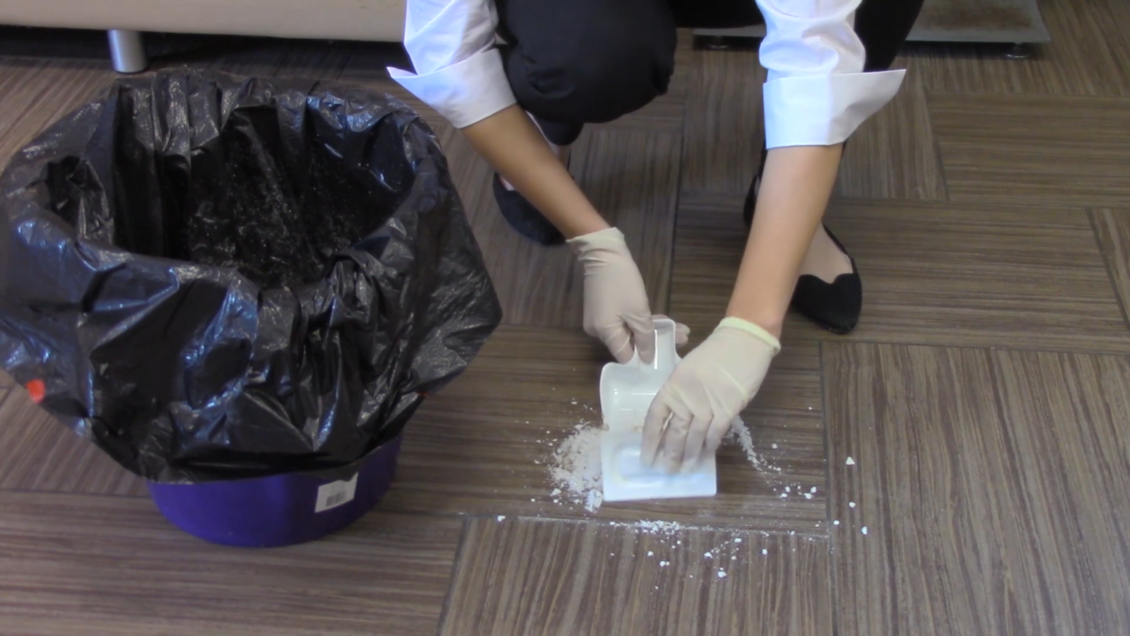CLEMSON — Vomit can create huge health concerns and for the more than 2 million people currently living in long-term care facilities and proper cleanup is critical to preventing the spread of disease.

A group of Clemson University researchers is part of a team that has received a $1.5 million grant from the Agency for Healthcare Research and Quality to study vomit cleanup.
Angela Fraser and Xiuping Jiang, professors in Clemson’s food, nutrition and packaging sciences department, are leading the study, “Building the Evidence for Vomit Clean Up in Long-Term Care Facilities.” They are working with researchers from the Centers for Disease Control (CDC), Emory University and the University of Illinois-Chicago.
“Long-term care facilities are the most common setting for norovirus outbreaks, accounting for an estimated 60 percent of these outbreaks,” Fraser said. “Vomitus cleanup procedures are available, but the evidence-base to inform some procedural steps is limited. As a result, some steps lack detail, which could result in multiple interpretations of how to clean up vomitus, which could lead to the ineffective removal of norovirus.”
Norovirus and Clostridium difficile are two causes of illness the researchers will study. The researchers will use simulated vomitus from recipes developed by Rachael Jones of the University of Illinois-Chicago. Three laboratory studies will measure dispersion, determine effectiveness of disinfection strategies and confirm the effectiveness of disinfection strategies developed by the Centers for Disease Control.
Norovirus is a highly contagious virus that can be spread through vomit. Symptoms include nausea, vomiting, abdominal pains or cramps, watery or loose diarrhea, low-grade fever and muscle pain. This is a particularly dangerous disease for people living in close quarters, such as in long-term care facilities.
The Clemson researchers will test the effectiveness of various chemical and non-chemical disinfectant strategies on soft surfaces, such as carpeting, which can be found in many long-term care facilities. Determining the correct disinfectant to clean vomit from soft surfaces is important for helping control norovirus outbreaks in these facilities.
“Not every disinfectant works the same way, nor can be used on every type of surface,” Fraser said. “Through this study, we hope to identify disinfectants that can be used to properly clean vomitus from soft surfaces.”
Disinfectants work by completely destroying all specific test organisms — bacteria, yeasts and viruses — within 10 minutes under specific test conditions. Sanitizers should reduce microorganisms to a safe level as determined by public health regulations.
How disinfectants or sanitizers act depends on their active ingredient. Some disinfectants have limited use as they do not meet these criteria, Fraser said. Chlorine bleach is a disinfectant commonly used with cleaning up vomit, but it can cause discoloration and ruin the surface.
Clostridium difficile is another bacterium prominent in long-term care facilities and is listed as one of the biggest public health challenges of all time. According the CDC, nearly half a million Americans suffer from clostridium difficile infections in a single year. More than 100,000 of these infections are found among residents living in nursing homes in the United States. This infection costs acute care facilities up to $4.8 billion each year.
A study by the CDC found that one out of every five patients with a health care-associated Clostridium difficile infection experienced a recurrence of the infection and one out of every 11 patients aged 65 or older with this infection died within 30 days of diagnosis.
“Our goal is to determine how we can control these pathogens,” Jiang said. “Because more and more people are living in long-term care facilities and because these infections are most commonly found in long-term care facilities, we need to determine which disinfectants are most effective in helping get rid of these bacteria so that patients won’t become sick. It is important we learn how to control the spread of diseases, such as norovirus and Clostridium difficile infections.”
END
This project is supported by grant number 1R01HS025981-01 from the Agency for Healthcare Research and Quality of the U.S. Department of Health and Human Services dedicated to improving the nation’s health care system. The content is solely the responsibility of the authors and does not necessarily represent the official views of the Agency for Healthcare Research and Quality.
Get in touch and we will connect you with the author or another expert.
Or email us at news@clemson.edu

